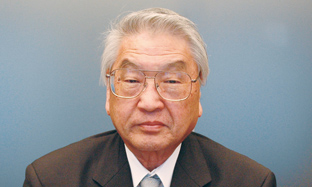
Nippon Steel’s vice president Shinichi Taniguchi said the firm tries to improve the competitiveness through across the board cost reduction. He said with the competitiveness, the firm tries to follow growing demand in Asia.
Mr. Taniguchi said the unconsolidated recurring profit decreased to 23.6 billion yen in fiscal 2011 from 80.1 billion yen in fiscal 2010 when the loss was 19.3 billion yen in the second half of fiscal 2011 compared with 42.9 billion yen of profit in the first half. He said historical high yen rate and lower volume impacted on the results. The high yen rate increased steel import from China and South Korea and damaged Japanese export competitiveness. The firm’s unconsolidated raw steel output decreased by 2.27 million tonnes to 30.2 million tonnes in fiscal 2011 from fiscal 2010 while the margin decreased by 170 billion yen. Mr. Taniguchi said the firm tries to reduce the cost in yen based on 80 yen per US dollar of exchange rage. He said the firm must win in price competition with rivals in South Korea and China in order to follow growing Asian demand while the firm seeks higher grade of products line. He said the firm increases machinery procurement from offshore suppliers to reduce depreciation. Mr. Taniguchi said the firm launches galvanizing lines in Mexico and Thailand and Indian continuous annealing line in and after 2013. He said the Thai galvanizing line can use cold rolled flat steel from Thai plant and Nippon Steel can export hot coil to Thailand instead of galvanizing steel. He indicates the firm could decide investment in integrated steel plant in Asia to follow Asian demand. Mr. Taniguchi said the firm’s unconsolidated raw steel output could be 7.6-7.7 million tonnes in April-June and near 8 million tonnes in July-September compared with former plan of 7.5-7.6 million tonnes in April-June thanks to higher automobile production. He said the firm conducts across the board actions in April-June to improve the profitability in July-September. He said the firm tries to improve the margin and realize annual 100 billion yen of cost reduction. The firm decided relining of blast furnace at Yawata works and restart of No.2 blast furnace at Kimitsu works while the firm adjusts the production level. Mr. Taniguchi said Yawata needs the relining to keep operation of electrical steel and tinplate and Kimitsu restarts the furnace on May 28 to meet higher steel demand. The firm’s capital expenditure was 180 billion yen for unconsolidated base and 265 billion yen for consolidated base in fiscal 2011. Mr. Taniguchi said the firm increases the capital expenditure in actual work basis in fiscal 2012. He said the unconsolidated capital expenditure increases by around 100 billion yen due to major items including relining of No.2 blast furnace at Kimitsu works and No.5 coke oven at Nagoya works while the firm keeps the expenditure at less than depreciation for the decision making base since fiscal 2010.











